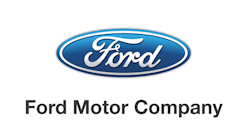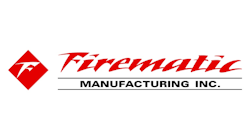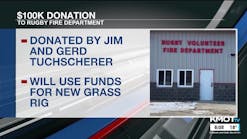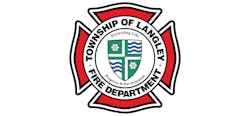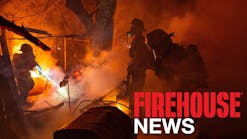Geography Dictates Wildland Apparatus Features
As wildfires rage out of control in Western states and Eastern states brace for a busy season this fall, wildland apparatus manufacturers are building specialized vehicles to meet the needs for firefighters on both coasts.
Two manufacturers, Boise Mobile Equipment (BME), an apparatus builder in Boise, ID, and Firematic Supply Company, in East Yaphank, NY, make different kinds of rigs for different applications.
Larry Segreto, vice president of BME, said his company makes wildland and brush apparatus primarily for the western regions.
More water and rollover protection
“As fires get bigger, the trend is to want more resources,” Segreto said. “There’s no doubt the trend is toward heavier trucks. The trucks are getting bigger.” He said the trucks are growing proportionally to the need for more water and the tanks getting bigger. “There’s now a lot of focus on 500 gallons, 750 gallons and even 1,000 gallons and they’re still calling them brush trucks,” he said.
All-wheel-drive and short wheelbase always has, and continues to be, the norm, Segreto said, noting that the changes in the gross vehicle weight (gvw) is perhaps the largest change, or trend, he’s seen lately.
One of the other reasons, other than the fires getting larger, is a breakthrough in the way the U.S. Forest Service buys trucks. For years, according to Segreto, there was a “quirk” where the federal government would charge the U.S. Forest Service a 12 percent excise tax on any vehicle over 33,000 gvws. Breaking that rule meant a barrier toward heavier trucks, with more water and resources.
As the fires have gotten bigger and claimed more property, Segreto said firefighters want more resources with them. “Before, it was unusual to lose a house,” Segreto said. “Now, were losing houses in Utah, Wyoming and southern Idaho.”
Western firefighters also want rollover protection, Segreto said. That doesn’t mean the massive roll cages some East Coast brush breakers have that armor the apparatus. Western firefighters are worried about rocks and steep or rough terrain that could easily overturn apparatus, Segreto said, whereas East Coast firefighters are worried about trees falling on their apparatus, hence the complete cage construction.
Most brush vehicles are built on commercial cabs and chassis and most have built-in roll protection, Segreto said. However, he added, some additional structural roll protection can be built into the bodies of low-profile trucks.
Smaller vehicles preferred
While apparatus in the West continues to grow, Segreto said firefighters don’t want long trucks, noting it becomes a question of maneuverability.
Firematic Supply builds apparatus primarily for the East Coast and they are mainly smaller vehicles on F550 Ford cabs and chassis, or similar types of vehicles.
David Horton is the company’s project manager. He is also involved with apparatus sales, design, engineering, parts ordering, research and development as well as dealer management and a myriad of other aspects of the business. Like Segreto, he’s seen increases in demand for water resources, but in a different approach.
“Customers want more water flow capabilities,” Horton said. “They want 1,000- 1,250-gpm pumps, like the big mid-ship pumpers.”
That trend has increased dramatically over the last couple of years and Horton thinks it has to do with where firefighters in the Northeast find water.
“They usually draft from places normal pumpers have difficult times getting to,” Horton said. “With a small F-550 type apparatus, it is easier to get to the static water sources like ponds, lakes streams and rivers.”
Newer technology and new transmission configurations allow small trucks to have big pumps and the fire service, at least in the Eastern portions, are taking advantage of it, Horton said.
While big water is the goal, small trucks can only carry so much, typically 300 to 400 gallons, Horton said, which is why bigger pumps are gaining popularity. He added some brush trucks his company builds are used as supply apparatus—getting to the water source and then pumping it back to the burning structure, or a water supply engine.
In some cases, the brush-type trucks are also used as initial attack engines. Horton explained that in his customer service area, there are a number of large expensive homes on long, and sometimes inaccessible driveways.
“They can drop 5-inch, or 3-inch line and take off toward the structure,” Horton said. “They can take off through the woods.”
Specialty tires
To help apparatus get to where it needs to be, Firematic developed a special tire system, called super single wheel tire conversion. So, instead of dual wheels in the rear, Firematic has hardware to allow one wide tire on each side. The tire conversion system is available on a vehicle the company calls Brush Rapid Attack Trucks—B.R.A.T. for short.
The single wheel conversion is important because F-550 based vehicles have a tendency to get stuck in areas with even just a little bit of wetness. The tire conversion also gives an immediate lift of about 2.5-inches with a maximum of up to 6 inches available for increased clearance.
Horton said Firematic has a manufacturer making two different kinds of proprietary tires for his apparatus, one that is very aggressive for vehicles going off road often and another with a different design for vehicles that are going to be more on paved surfaces for a little better fuel mileage and handling.
“Instead of burying themselves with factory tires, these tires are going to get you out,” Horton said. “And that’s an important feature if firefighters find themselves in dangerous situations and need to get out quickly. It will help get across a muddy field or down a driveway, or over a knocked down tree, much safer.”
Safety in design
Some brush/wildland apparatus have outside seating positions for firefighters and Horton said his company has built “a couple of them” over the years. “It’s more of a Midwest style,” Horton said.
The apparatus committee for the NFPA considered, but ultimately rejected, a requirement for restraints for firefighters who ride on the outside of apparatus. NFPA standards do not recommend any firefighter ride in any position on apparatus. However, there are some departments that commonly have firefighters outside with nozzles in special seats or platforms.
While that’s not Firematic’s market, Horton believes some sort of restraint or firefighter protection is a good idea.
“I don’t see that as a trend here,” Horton said regarding outside riding position requirements.
For occupant and equipment protection, Horton said Firematic builds apparatus with full roll cages over and around the cab. The cages are designed to keep things from falling on cabs, he said.
Rollbars are also incorporated in flatbed-type trucks, he said, noting they are tucked right up behind the cab and can support the weight of the truck, preventing the cabs from being crushed in the event of a roll-over crash. He said it enhances what Ford, and other chassis manufacturers, already build into their cabs and chassis from the factory.
Pump options
Another feature Horton has seen growing in popularity is the installation of small portable pumps in addition to the large mid-ship style pumps. Pumps like Darley’s Davey pumps, which are powered by separate engines and are self-priming from the on-board tanks give departments pump and roll capabilities, a necessary option for those departments that chase fires and have outside water monitors or personnel with nozzles. It also provides water for reels for personnel on the ground to use.
“With the bigger pumps, you have to stay stationary to use them,” Horton said, noting the smaller, self-contained pumps give the apparatus more versatility.
Horton has also noticed that the once popular front-mount pumps have faded from favor.
“They used to be extremely popular,” Horton said. “The departments that had front-mount pumps loved them. They could pull right up to the water and start drafting.” He’s not sure why the front-mounts have fallen out of favor, but thinks it might be something to do with the availability of the mid-ship style pumps.
While Firematic focuses on Ford F-550 cab-based apparatus, it builds an occasional apparatus on a Freightliner, or International cab and chassis.
“It all depends on what the customers want,” he said.

